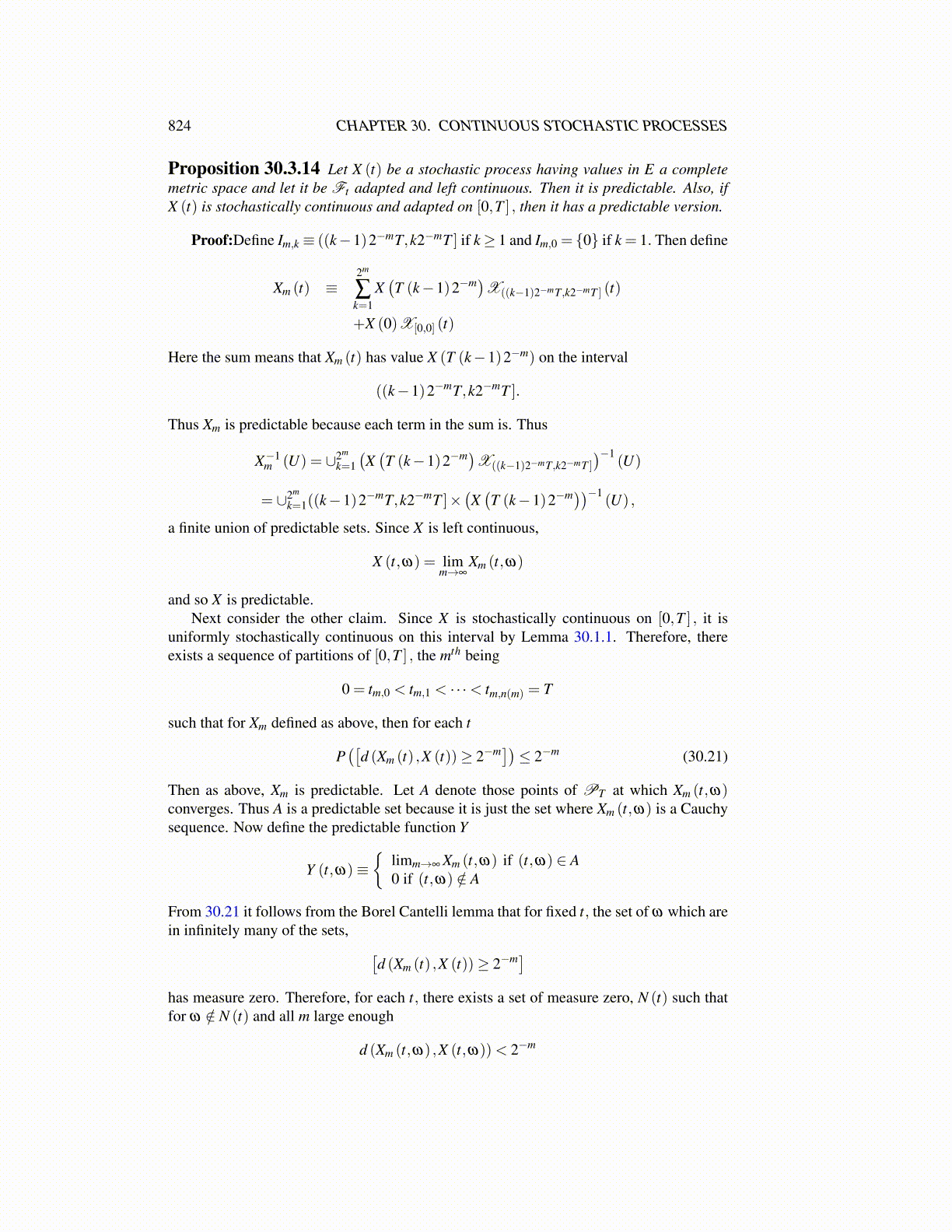
824 CHAPTER 30. CONTINUOUS STOCHASTIC PROCESSES
Proposition 30.3.14 Let X (t) be a stochastic process having values in E a completemetric space and let it be Ft adapted and left continuous. Then it is predictable. Also, ifX (t) is stochastically continuous and adapted on [0,T ] , then it has a predictable version.
Proof:Define Im,k ≡ ((k−1)2−mT,k2−mT ] if k≥ 1 and Im,0 = {0} if k = 1. Then define
Xm (t) ≡2m
∑k=1
X(T (k−1)2−m)X((k−1)2−mT,k2−mT ] (t)
+X (0)X[0,0] (t)
Here the sum means that Xm (t) has value X (T (k−1)2−m) on the interval
((k−1)2−mT,k2−mT ].
Thus Xm is predictable because each term in the sum is. Thus
X−1m (U) = ∪2m
k=1(X(T (k−1)2−m)X((k−1)2−mT,k2−mT ]
)−1(U)
= ∪2m
k=1((k−1)2−mT,k2−mT ]×(X(T (k−1)2−m))−1
(U) ,
a finite union of predictable sets. Since X is left continuous,
X (t,ω) = limm→∞
Xm (t,ω)
and so X is predictable.Next consider the other claim. Since X is stochastically continuous on [0,T ] , it is
uniformly stochastically continuous on this interval by Lemma 30.1.1. Therefore, thereexists a sequence of partitions of [0,T ] , the mth being
0 = tm,0 < tm,1 < · · ·< tm,n(m) = T
such that for Xm defined as above, then for each t
P([
d (Xm (t) ,X (t))≥ 2−m])≤ 2−m (30.21)
Then as above, Xm is predictable. Let A denote those points of PT at which Xm (t,ω)converges. Thus A is a predictable set because it is just the set where Xm (t,ω) is a Cauchysequence. Now define the predictable function Y
Y (t,ω)≡{
limm→∞ Xm (t,ω) if (t,ω) ∈ A0 if (t,ω) /∈ A
From 30.21 it follows from the Borel Cantelli lemma that for fixed t, the set of ω which arein infinitely many of the sets, [
d (Xm (t) ,X (t))≥ 2−m]has measure zero. Therefore, for each t, there exists a set of measure zero, N (t) such thatfor ω /∈ N (t) and all m large enough
d (Xm (t,ω) ,X (t,ω))< 2−m